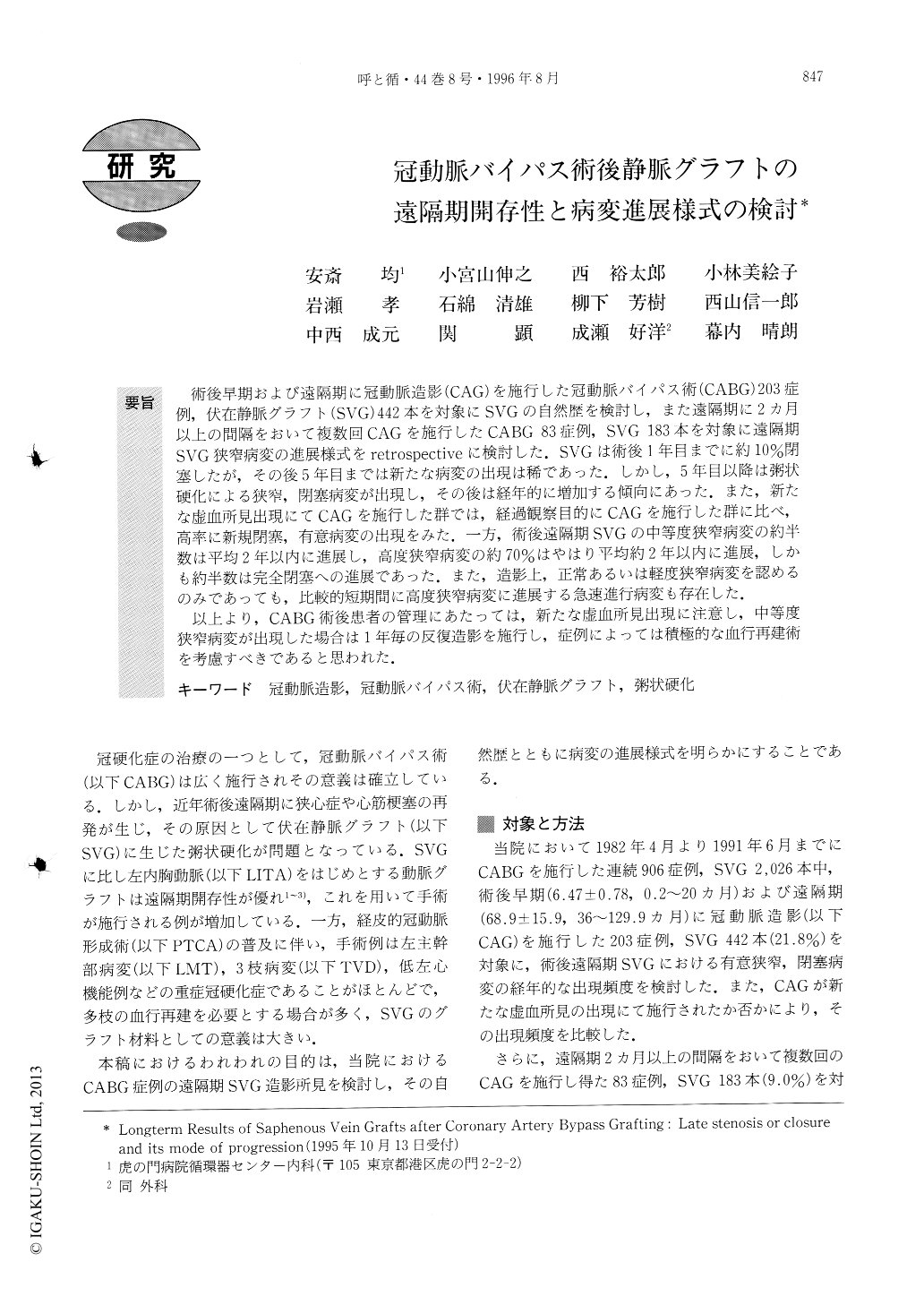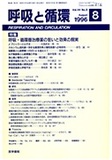Japanese
English
- 有料閲覧
- Abstract 文献概要
- 1ページ目 Look Inside
術後早期および遠隔期に冠動脈造影(CAG)を施行した冠動脈バイパス術(CABG)203症例,伏在静脈グラフト(SVG)442本を対象にSVGの自然歴を検討し,また遠隔期に2カ月以上の間隔をおいて複数回CAGを施行したCABG 83症例,SVG 183本を対象に遠隔期SVG狭窄病変の進展様式をretrospectiveに検討した.SVGは術後1年目までに約10%閉塞したが,その後5年目までは新たな病変の出現は稀であった.しかし,5年目以降は粥状硬化による狭窄,閉塞病変が出現し,その後は経年的に増加する傾向にあった.また,新たな虚血所見出現にてCAGを施行した群では,経過観察目的にCAGを施行した群に比べ,高率に新規閉塞,有意病変の出現をみた.一方,術後遠隔期SVGの中等度狭窄病変の約半数は平均2年以内に進展し,高度狭窄病変の約70%はやはり平均約2年以内に進展,しかも約半数は完全閉塞への進展であった.また,造影上,正常あるいは軽度狭窄病変を認めるのみであっても,比較的短期間に高度狭窄病変に進展する急速進行病変も存在した.
以上より,CABG術後患者の管理にあたっては,新たな虚血所見出現に注意し,中等度狭窄病変が出現した場合は1年毎の反復造影を施行し,症例によっては積極的な血行再建術を考慮すべきであると思われた.
To clarify the natural history of saphenous vein grafts (SVGS) used in coronary artery bypass grafting (CABG) , we investigated the follow-up coronary angio-graphy of 442SVGs in 203 patients with CABG perfor-med in the early postoperative period (after about 6 months) and in the late postoperative period (after about 6.8 years). In addition, we evaluated the progres-sion of stenotic lesions by coronary angiography in 183late SVGs performed at least twice during the postoper-ative period.
Results: (1) After 5 years, SVGs became atheros-clerotic resulting in significant stenotic and obstructive lesions. Afterward, the incidence of new lesions tended to increase further. (2) The group of patients who were examined by additional angiography because of the development of the signs of new ischemia had a higher incidence of additional significant and obstruc-tive lesions as compared with the patients who had no signs of new ischemia. (3) About a half of moderate (50%≦,<75%) stenotic lesions of the late SVGs pro-gressed to severe stenotic lesions. About 70% of over 75% significant stenotic lesions of the late SVGs became more significant and about a half of them reached total occlusion. (4) There is some evidence that minor stenotic lesions became significant after only one or two years.
Conclusions: We must pay careful attention to the occurrence of new ischemia after CABG. If moderate stenotic lesions occur, we should perform coronary angiography once a year and always consider the pos-sible need for revascularization therapy including per-cutaneous coronary angioplasty.

Copyright © 1996, Igaku-Shoin Ltd. All rights reserved.


